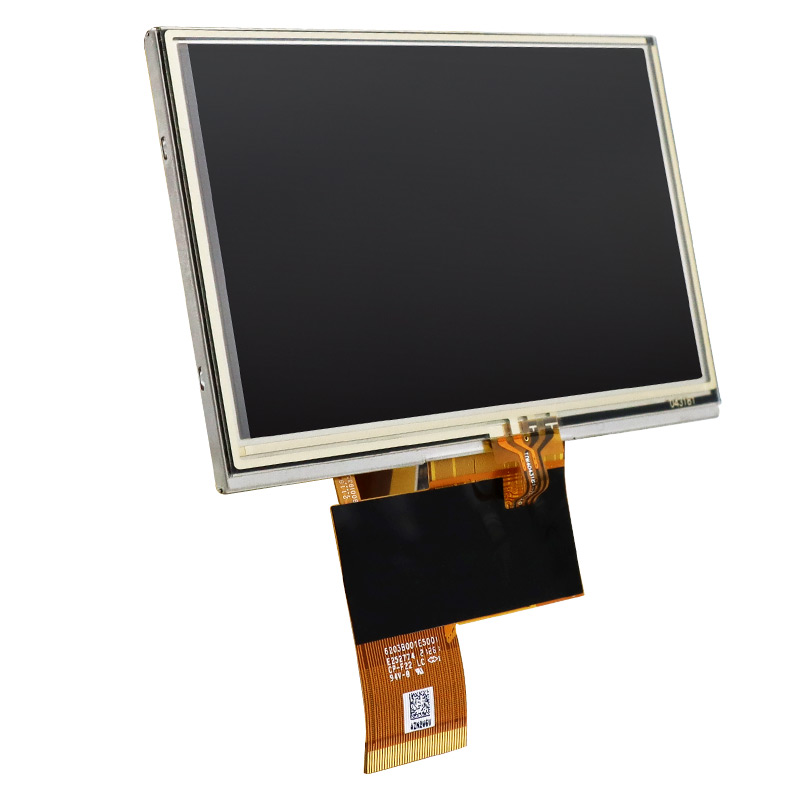
In the field of LCD displays, TN panel is a term with a long history and is widely known. It represents a Twisted Nematic liquid crystal display screen. This type of screen is widely used in various display devices due to its fast response time, low production cost, and mature manufacturing technology. Today, we at Zhicheng Optoelectronics will explain to you what TN panels are and their working principles.
Liquid crystal is a special substance that possesses both the fluidity of liquids and certain optical properties of crystals. TN type liquid crystal display technology is a technology that changes the polarization state of light passing through the liquid crystal layer by controlling the arrangement of liquid crystal molecules, thereby achieving image display.
In a typical TN LCD screen, the liquid crystal layer is sandwiched between two glass plates, both of which are covered with a conductive film called a transparent electrode. These transparent electrodes can apply voltage, thereby generating an electric field in the liquid crystal layer. In addition, the surface of the glass plate is specially treated to arrange liquid crystal molecules in a certain direction, which is usually referred to as the friction direction or pre tilt direction.
In an environment without an electric field, liquid crystal molecules exhibit a twisted arrangement. Specifically, this is because the two sides of the liquid crystal layer are aligned with the friction side, while the liquid crystal layer in the central position will gradually rotate 90 degrees. Thanks to the birefringence property of liquid crystal materials, this unique molecular configuration can change the polarization direction of light passing through it, meaning that light with different polarization states will pass through the liquid crystal material at different speeds.
When an electric field is applied to a transparent electrode in a certain region, the liquid crystal molecules in that region are rearranged so that their long axes point in the same direction, causing the region to lose its original twisted structure. The result is that the polarization state of the light passing through this part of the liquid crystal layer will not change.
In order to complete the image display, the TN screen is also equipped with two polarizers, each placed on the outside of the glass plate. The transmission axis of one polarizer is perpendicular to the other. In the absence of an electric field, when light passes through a twisted liquid crystal layer, its polarization direction will rotate 90 degrees with the rotation of the liquid crystal molecules. Therefore, it can pass through the second polarizer and reach the observer's eye. However, when an electric field is applied to an area that blocks the polarization rotation of light, these rays cannot pass through the second polarizer, making them appear dark in these areas.
By precisely controlling the voltage distribution on the transparent electrode, different bright and dark areas can be created to form an image. This is the basic principle of TN type LCD display operation.
It is worth noting that TN screens are popular in the market due to their simple construction and low cost, but they also have some drawbacks. For example, due to the inherent characteristics of molecular arrangement, TN screens have a strong perspective dependence, which means that color distortion and contrast decrease may be observed when viewed from the side.
Despite some limitations, TN panels still hold an irreplaceable position in many fields, especially in applications that require high response speed, such as gaming players and professional designers, who still favor the fast response ability of TN screens. With the advancement of display technology, we expect TN panels to further improve perspective issues while maintaining their advantages, providing users with a more comprehensive visual experience.
The above is an introduction to the TN panel and its working principle. By gaining a deeper understanding of liquid crystal molecule control methods, we can better grasp the characteristics of such display technologies and their applications in modern electronic devices. I hope this article can bring you a new understanding of LCD display technology.
Recommended products:
7 Inch LCD Screen 800*480 AT070TN92 (wincer.cn)
7 Inch TFT LCD Screen 800*480 AT070TN83 V.1 (wincer.cn)
5 Inch LCD Screen 640*480 ZJ050NA-08C (wincer.cn)
lcd liquid crystal display (wincer.cn)
